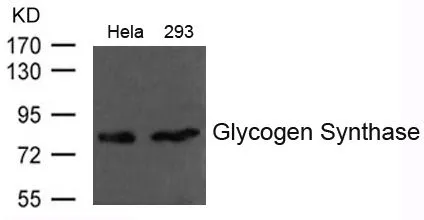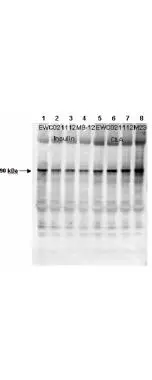
Affinity Purified Phospho-specific antibody to human muscle Glycogen Synthase at pS640 (GTX22479) was used at a 1:1000 dilution to detect human muscle GS by Western blot. Approximately 12 ul of a mouse cardiac myocyte lysate was loaded per lane on a 4-20% Criterion gel for SDS-PAGE. Samples were either mock treated (lanes 1 and 5) or insulin treated at 10 nM, 100 nM and 1 microM (lanes 2, 3 and 4 respectively) for 15 or CLA treated at 4nM, 20 nM or 100 nM (lanes 6,7 and 8 respectively) for 45. After washing, a 1:5,000 dilution of HRP conjugated Gt-a-Rabbit IgG (GTX27090) preceded color development using Amershams substrate system.
Glycogen synthase 1 (phospho Ser641) antibody
GTX22479
ApplicationsWestern Blot, ELISA, ImmunoHistoChemistry, ImmunoHistoChemistry Paraffin
Product group Antibodies
ReactivityHuman, Mouse
TargetGYS1
Overview
- SupplierGeneTex
- Product NameGlycogen synthase 1 (phospho Ser641) antibody
- Delivery Days Customer9
- Application Supplier NoteWB: 1:1000-1:10000. IHC-P: 1:1000-1:5000. ELISA: 1:20000-1:60000. *Optimal dilutions/concentrations should be determined by the researcher.Not tested in other applications.
- ApplicationsWestern Blot, ELISA, ImmunoHistoChemistry, ImmunoHistoChemistry Paraffin
- CertificationResearch Use Only
- ClonalityPolyclonal
- Concentration1 mg/ml
- ConjugateUnconjugated
- Gene ID2997
- Target nameGYS1
- Target descriptionglycogen synthase 1
- Target synonymsGSY, GYS, glycogen [starch] synthase, muscle, glycogen synthase 1 (muscle)
- HostRabbit
- IsotypeIgG
- Protein IDP13807
- Protein NameGlycogen [starch] synthase, muscle
- Scientific DescriptionHuman muscle glycogen synthase (GS) is responsible for the biosynthesis of glycogen from phosphorylated glucose units. Mammalian liver and muscle contain GS consisting of four subunits with a total molecular weight of 360,000. GS is subject to regulation through both allosteric and covalent modification and occurs in two forms: the phosphorylated inactive form, and the dephosphorylated active form. GS is inactivated by the serine/threonine kinase called glycogen synthase kinase-3b that mainly functions to phosphorylate muscle glycogen synthase. This antibody is specific for the phosphorylated form of GS at Ser 640. Phosphorylation of GS at S640 has been associated with Antiphospholipid Antibody Syndrome.
- ReactivityHuman, Mouse
- Storage Instruction-20°C or -80°C,2°C to 8°C
- UNSPSC12352203
References
- Brull A, de Luna N, Blanco-Grau A, et al. Phenotype consequences of myophosphorylase dysfunction: insights from the McArdle mouse model. J Physiol. 2015,593(12):2693-706. doi: 10.1113/JP270085Read this paper

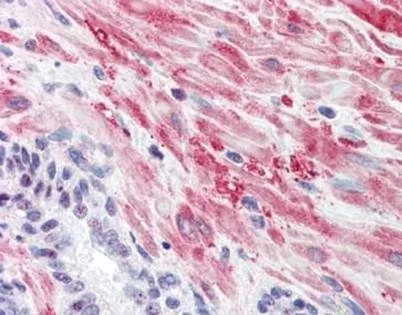
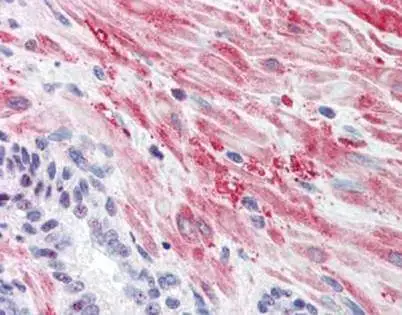
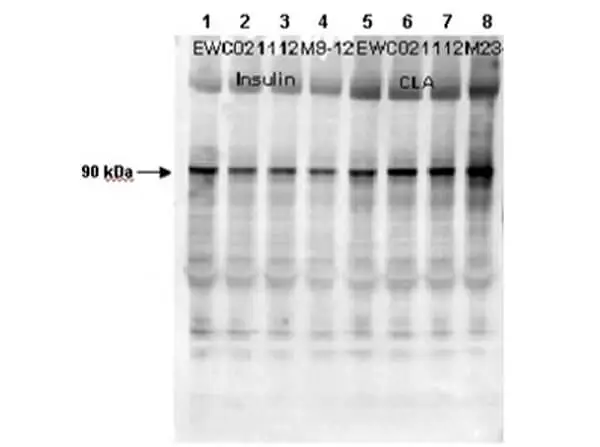

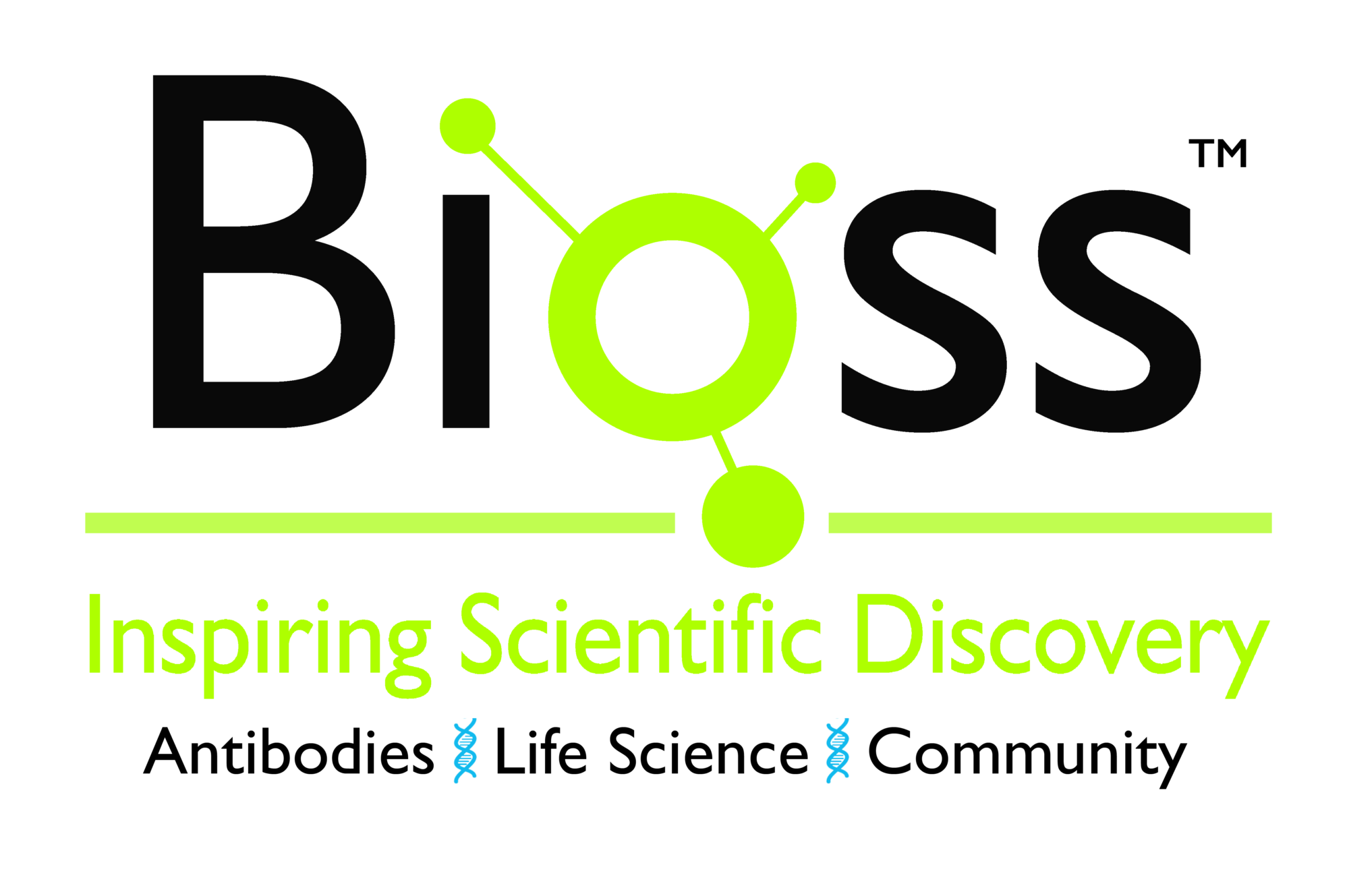
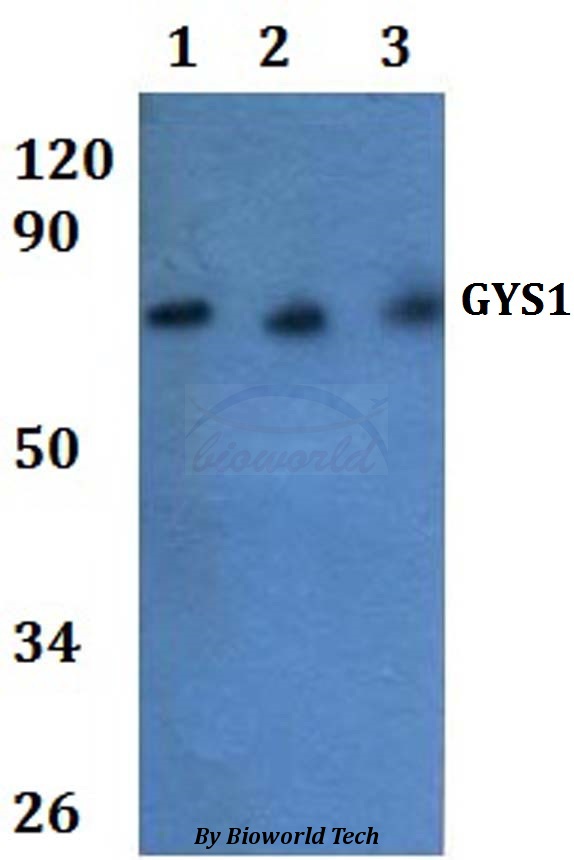
![Untreated (-) and treated (+) HeLa whole cell extracts (30 microg) were separated by 7.5% SDS-PAGE, and the membrane was blotted with Glycogen synthase 1 (phospho Ser641) antibody [GT1284] (GTX03196) diluted at 1:500. The HRP-conjugated anti-rabbit IgG antibody (GTX213110-01) was used to detect the primary antibody.](https://www.genetex.com/upload/website/prouct_img/normal/GTX03196/GTX03196_4000000207_20210716_WB_CIP_w_23053123_329.webp)

